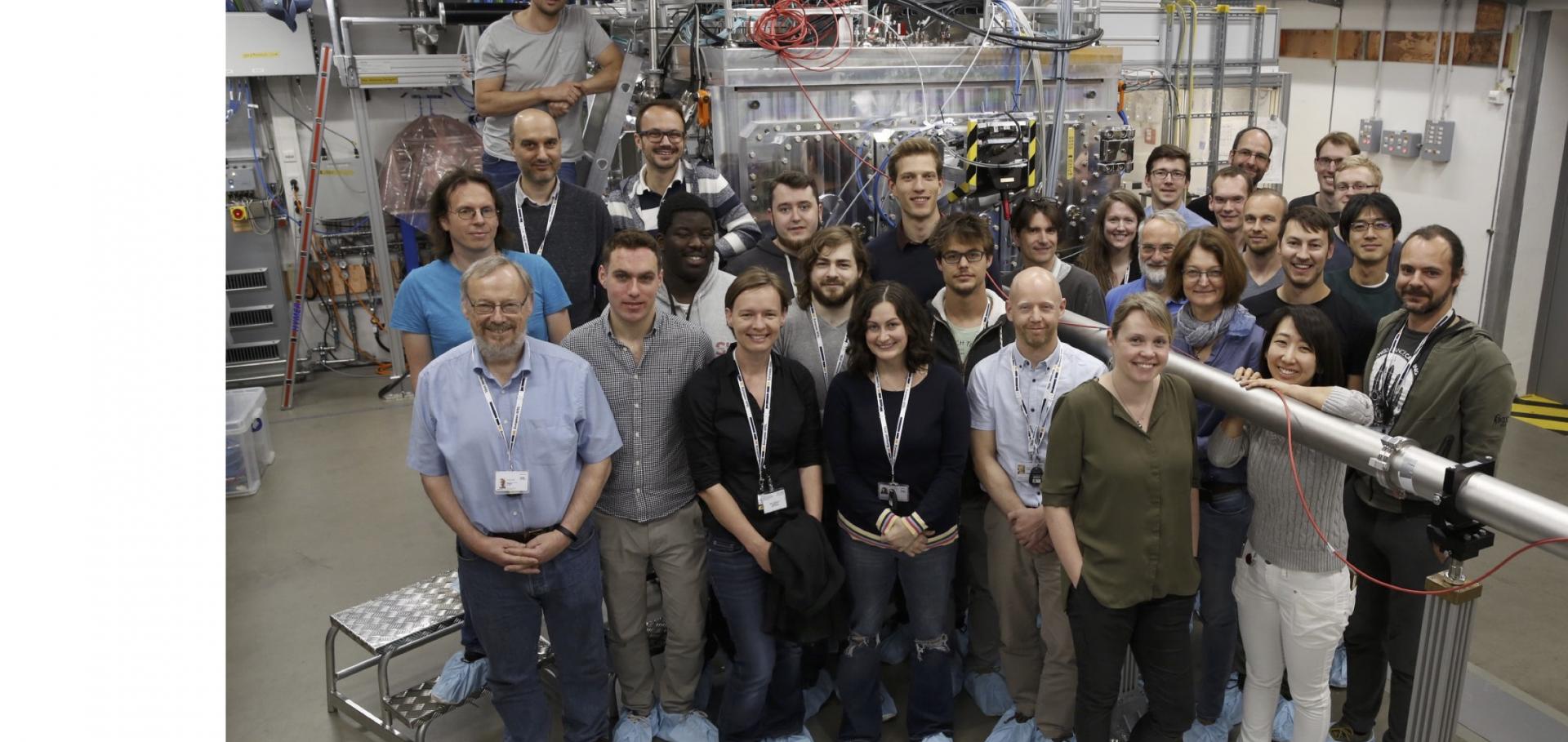XUV spectroscopic characterization of warm dense aluminum plasmas generated by the free-electron-laser FLASH
Laser and Particle Beams 30:1 (2012) 45-56
Abstract:
We report on experiments aimed at the generation and characterization of solid density plasmas at the free-electron laser FLASH in Hamburg. Aluminum samples were irradiated with XUV pulses at 13.5 nm wavelength (92 eV photon energy). The pulses with duration of a few tens of femtoseconds and pulse energy up to 100 μJ are focused to intensities ranging between 10 13 and 10 17 W/cm 2. We investigate the absorption and temporal evolution of the sample under irradiation by use of XUV and optical spectroscopy. We discuss the origin of saturable absorption, radiative decay, bremsstrahlung and atomic and ionic line emission. Our experimental results are in good agreement with simulations. © 2012 Cambridge University Press.Self-consistent measurement of the equation of state of liquid deuterium
High Energy Density Physics Elsevier 8:1 (2012) 76-80
Creation and diagnosis of a solid-density plasma with an X-ray free-electron laser.
Nature 482:7383 (2012) 59-62
Abstract:
Matter with a high energy density (>10(5) joules per cm(3)) is prevalent throughout the Universe, being present in all types of stars and towards the centre of the giant planets; it is also relevant for inertial confinement fusion. Its thermodynamic and transport properties are challenging to measure, requiring the creation of sufficiently long-lived samples at homogeneous temperatures and densities. With the advent of the Linac Coherent Light Source (LCLS) X-ray laser, high-intensity radiation (>10(17) watts per cm(2), previously the domain of optical lasers) can be produced at X-ray wavelengths. The interaction of single atoms with such intense X-rays has recently been investigated. An understanding of the contrasting case of intense X-ray interaction with dense systems is important from a fundamental viewpoint and for applications. Here we report the experimental creation of a solid-density plasma at temperatures in excess of 10(6) kelvin on inertial-confinement timescales using an X-ray free-electron laser. We discuss the pertinent physics of the intense X-ray-matter interactions, and illustrate the importance of electron-ion collisions. Detailed simulations of the interaction process conducted with a radiative-collisional code show good qualitative agreement with the experimental results. We obtain insights into the evolution of the charge state distribution of the system, the electron density and temperature, and the timescales of collisional processes. Our results should inform future high-intensity X-ray experiments involving dense samples, such as X-ray diffractive imaging of biological systems, material science investigations, and the study of matter in extreme conditions.Molecular dynamics simulations of ramp-compressed copper
PHYSICAL REVIEW B 85:2 (2012) ARTN 024112
Nanosecond white-light Laue diffraction measurements of dislocation microstructure in shock-compressed single-crystal copper.
Nat Commun 3 (2012) 1224


